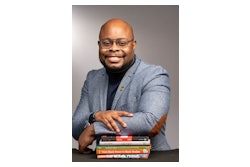Latine learners now make up nearly one-in-five college students between the ages of 18 and 24. With the share of Latine students doubling over the past two decades, the number of Hispanic-Serving Institutions (HSIs) has also risen. Established in 1992, this federal designation is granted to institutions with an enrollment that consists of at least 25% Hispanic students. There are currently nearly 600 HSIs across the country. There are also about 400 emerging HSIs — institutions where Hispanic students account for 15% to 24.9% of enrollment.
While hundreds of institutions are now HSIs or emerging HSIs by designation, there are varying degrees in how these institutions truly serve Latine students. Too often, HSIs would be more accurately characterized as simply Hispanic-enrolling institutions. Changes in demographics mean it is not uncommon for a predominantly white institution to inadvertently become an HSI. They find themselves in the position of achieving this important designation without necessarily putting in the thoughtful and intentional institutional efforts required to serve Latine students well.
 Dr. Roberto Montoya
Dr. Roberto Montoya
I grew up in poverty in the Albuquerque barrios. My community was nearly entirely Brown with the majority of my neighbors identifying as Hispanic, Mexican, Chicana, and Latine. This was true in school, too, where my classmates were overwhelmingly Indigenous, Black, and Brown. Despite this insulation, I can’t say that I ever felt a deep, profound sense of belonging and servingness during my education. I attended three predominantly white institutions on the journey to earning my doctorate; all three were also emerging HSIs at the time.
Arriving as a freshman at a predominantly white college, I was in for a culture shock. I quickly realized I was unprepared — both academically and socially. I did not see myself reflected in the curriculum, my professors, or the administration. In fact, I made my way through undergrad and graduate school without having a single Latino male professor. When I finally had a professor who looked like me while I was earning my doctorate, the impact was truly immeasurable. I often wonder what my experience would have been like had this been the case much earlier in my academic career. There is a profound indignity in rarely seeing a teacher, administrator, or institutional leader that looks like you.
My story is a familiar one even now. The federal designation and — its enrollment requirement — remain a pretty low bar to clear. The majority of HSIs have large numbers of Latine students, but their cultures, practices, and policies stubbornly reflect their origins as predominantly white institutions. As a result, many HSIs struggle to create a sense of belonging for Latine students, and completion continues to be a significant barrier.
As a result of these experiences, I felt called and compelled to ensure that emerging and existing HSIs are supported and co-founded the Colorado HSI consortium and now work to support HSIs across the country.
Institutions can approach the HSI threshold with far more intentionality by adopting “servingness” as an operating principle. Dr. Gina Ann Garcia is leading the way in centering servingness, which is a multidimensional, culturally enhancing approach to educating Latine students. Enrollment “is simply not enough when it comes to servingness,” writes Garcia, a University of California Berkeley School of Education professor who conceived the concept. “Colleges and universities that are eligible and federally designated as HSIs must enhance the racial-ethnic identity of Latinxs while striving to provide equitable experiences and outcomes for these students.”
Austin Community College District (ACC), for instance, was first recognized as an HSI in 2011, The designation is not, however, all that notable in and of itself. ACC is, after all, the sixth-largest community college system in the country, serving 70,000 students in a state that is now majority Hispanic. In 2019, however, the system was awarded the National Seal of Excelencia by the nonprofit Excelencia in Education. The seal recognizes institutions that demonstrate intentional and effective strategies dedicated to ensuring Latine learners thrive. For ACC, those strategies include its Ascendor program, which provides mentorship, community events, and other culturally relevant support services to first-year students hoping to earn a bachelor’s degree.
At Waubonsee Community College — an Hispanic-Serving Institution in the western suburbs of Chicago — students now have access to a Latinx Resource Center, a success coaching program, and streamlined pathways to earning degrees and credentials. Meanwhile, campus leaders at California State University, Bakersfield, are doubling down on holistic student support to close equity gaps among its diverse student population. About 63% of the institution’s students identify as Hispanic, 65% receive Pell Grants, and nearly 40% have transferred from a California Community College (CCC).
These colleges and universities are all leveraging their designation as HSIs to proactively inspect and refine their policies and practices. They are investing in wraparound support services that acknowledge the unique strengths, challenges, and backgrounds of their students. They are taking a hard look at the diversity of their faculty, staff, and curricula. And they are using metrics to assess institutional progress toward servingness.
As this handful of institutions and many others demonstrate, becoming an HSI is not an endpoint but a beginning. By leveraging this important designation to create a more responsive environment that supports student success, colleges and universities can ensure they are not Hispanic-Serving Institutions in name only.
Dr. Roberto Montoya is associate vice president of partner success at InsideTrack.



















